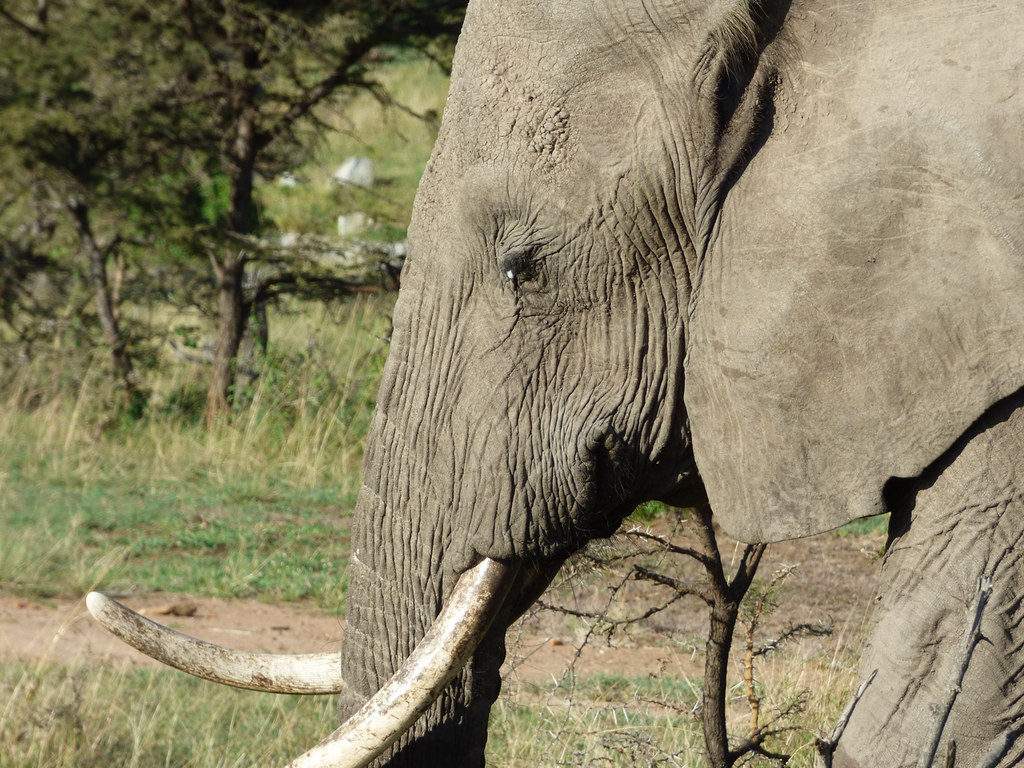Last week a collaborative group of 17 non-governmental organisations from around the world, led by David Shepherd Wildlife Foundation, launched a social media campaign highlighting the links between the EU and Japan’s legal ivory markets and the poaching of African elephants.
The campaign comes in light of an upcoming CITES (the Convention on International Trade in Endangered Species of Wild Fauna and Flora) convention in Geneva next month, where a coalition of 32 African countries known as the African Elephant Coalition (AEC) will be calling on all countries to close their ivory markets “as a matter of urgency.”
Tens of thousands of African elephants are slaughtered every year for their tusks. This senseless cruelty is fueled by the insatiable demand for ivory across the world, including Japan and the EU.

Close-up of an African Elephant, Kenya. Image credit Wolf Gordon Clifton / Animal People, Inc.
Momentum is growing globally to close domestic ivory markets and end all trade in ivory. However, going against overwhelming public opinion, the EU commission is planning to reject steps to award African elephants the greatest possible protection at CITES next month.
In response to a joint proposal which included the AEC in 2017, the convention agreed to address the issue of domestic ivory markets and their impacts on wild populations. However, the recommendation is subject to the condition that the market “is contributing to poaching or illegal trade.” This creates loopholes for countries with legal markets (notably Japan and the EU), allowing them to keep their ivory markets open.
Whilst a new proposal submitted to CITES by the AEC recognizes and supports the significant steps taken by many parties to close their domestic ivory markets, it highlights that maintaining a domestic ivory market creates opportunities for laundering illegally obtained ivory, presents monitoring and enforcement challenges, in particular due to the difficulty of policing online trade, and undermines ivory bans in other countries by providing an alternative outlet to which suppliers and traffickers can re-locate.

An example of the types of ivory objects elephants are killed to make. These were seized in the United States in 2013 and destroyed. Image credit Kate Miyamoto / USFWS, CC BY-SA 3.0.
The crisis facing the African elephant cannot be effectively tackled without taking steps to address one of the key drivers of demand: the existence of domestic legal ivory markets.
The Ivory is Theirs campaign calls on the public in EU member countries to contact their Minister, Members of Parliament, and Members of European Parliaments to voice their support for a total ban in the trade of ivory giving elephants the greatest possible level of protection.
Please join David Shepherd Wildlife Foundation in the fight to protect Africa’s remaining elephant populations.
View the “The Ivory is Theirs” campaign here.
Warning: the above campaign video does contain images of elephant corpses mutilated for their ivory, which may be upsetting to some viewers.
Featured image: an African elephant seen in Kenya’s Masai Mara. Image credit Wolf Gordon Clifton / Animal People, Inc.





